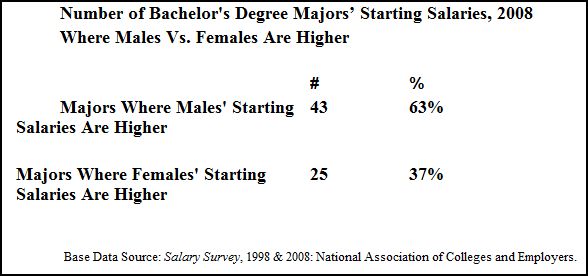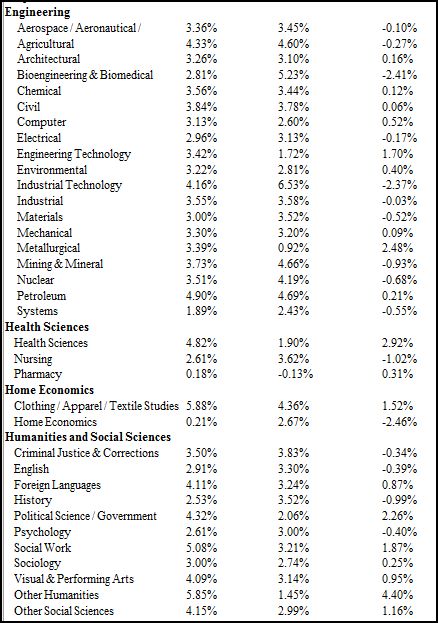Stan S. sent us a recent research report by Economist Kent Gilbreath. He presents data illustrating gender differences in the starting salaries of college graduates with different majors, as well as data on the way in which gender differences have changed between 1998 and 2008. The findings are in the direction you might expect, but with quite a bit of variation!
First, Gilbreath summarizes the data. Of all of the majors he surveyed, males have higher starting salaries 63% of the time; women have higher starting salaries in the remaining 37%:

Here are the details by major; net differences (far right column), when positive, reflect how much more money men are making than woman and, when negative, reflect how much more money women are making than men (the variation is quite amazing!):


And here’s the data for the sciences, though the format is off:

Gilbreath then looks at change in the gender difference between 1998 and 2008. Again, a summary shows that, in 58% of the cases, men’s advantage over women is growing and, in the remaining 42%, women’s advantage is growing:

The details show which majors have shown a better growth rate for men or women. A positive average annual growth rate (far right column) is a gain for men over women and a negative one is a gain for women over men.



This is great data because it shows that, overall, men receive higher starting salaries than women, and their advantage is growing, but the advantage that accrues to men is not even. It depends, very much, on what their major is.
Anyone see any interesting trends or have any stories from the field?
Lisa Wade, PhD is an Associate Professor at Tulane University. She is the author of American Hookup, a book about college sexual culture; a textbook about gender; and a forthcoming introductory text: Terrible Magnificent Sociology. You can follow her on Twitter and Instagram.
























